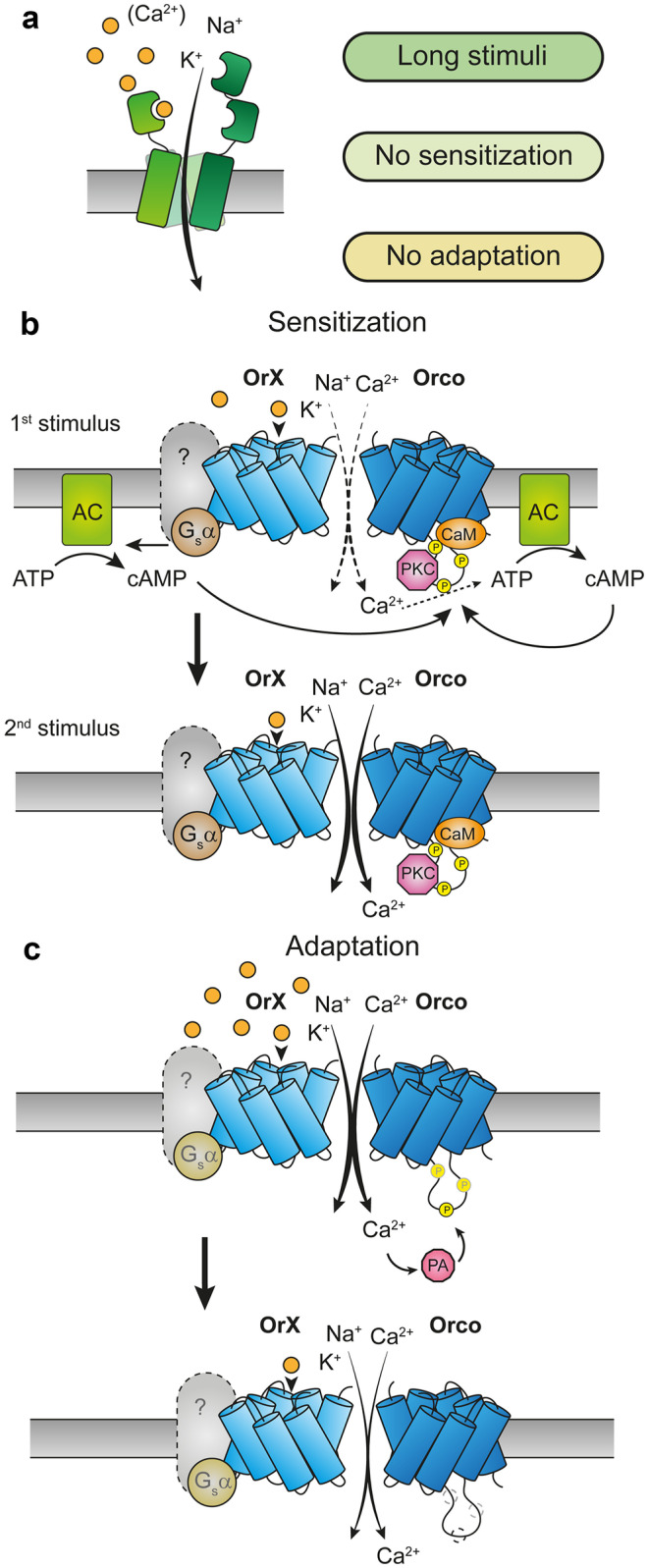Fig. 4.

Function and regulation of IRs and ORs. a IRs are ligand-gated ion channels mainly permeable to monovalent cations (Na+, K+). Ca2+ conductance in, e.g., Ir84a depends on the Q401 residue in the channel M2 region described in Fig. 3. IR channels are activated by long-lasting stimuli, and their activity is not modulated by sensitization or adaptation mechanisms (Getahun et al. 2012). b–c ORs are nonselective cation channels modulated by intracellular signaling cascades. Activation of these cascades depends on the stimulus strength and may lead to receptor sensitization (b) or adaptation (c). b Activation of a tuning OrX can produce an increase in intracellular cAMP levels in a Ca2+-dependent and Ca2+-independent manner, leading to the activation of adenylyl cyclases (AC) (Miazzi et al. 2016). Upon phosphorylation of Orco via protein kinase C (PKC), cAMP can increase the activity of OR channels (bold arrow) when repeatedly exposed to sub-threshold stimuli (Getahun et al. 2013; Getahun et al. 2016; Sargsyan et al. 2011; Wicher et al. 2008). Receptor sensitization requires also calmodulin (CaM), as this process can be suppressed via CaM pharmacological inhibition (Mukunda et al. 2016). c A single Orco residue, S289, governs OR adaptation and desensitization. When Ca2+-dependent phosphatases (PA) dephosphorylate Orco at position S298, the sensitivity of ORs to their agonist is diminished (light arrow) (Guo et al. 2017; Guo and Smith 2017)
